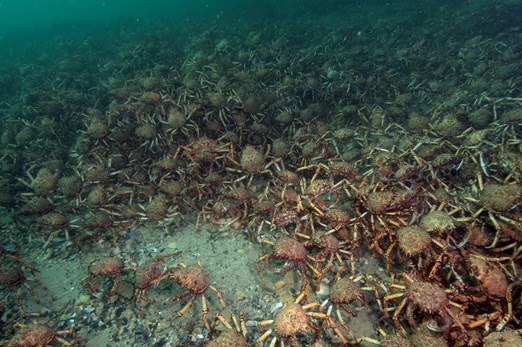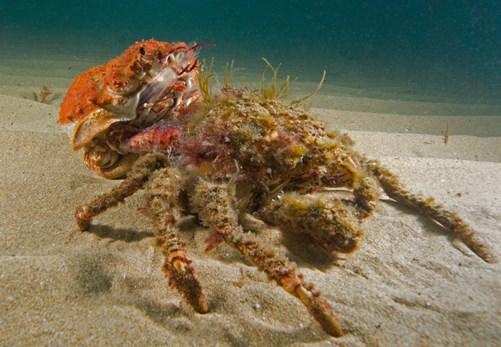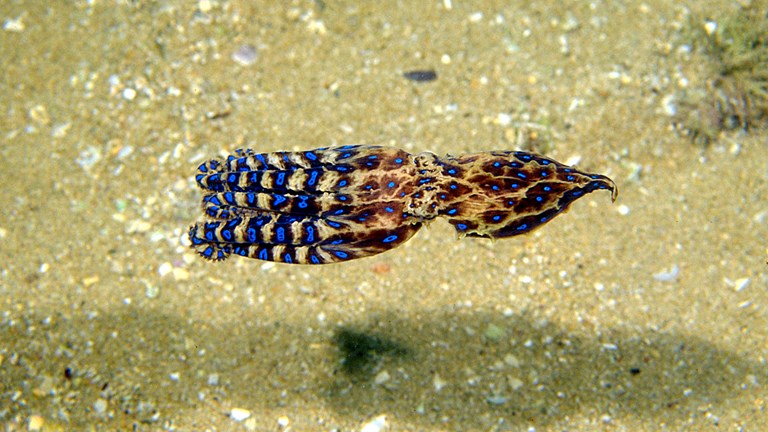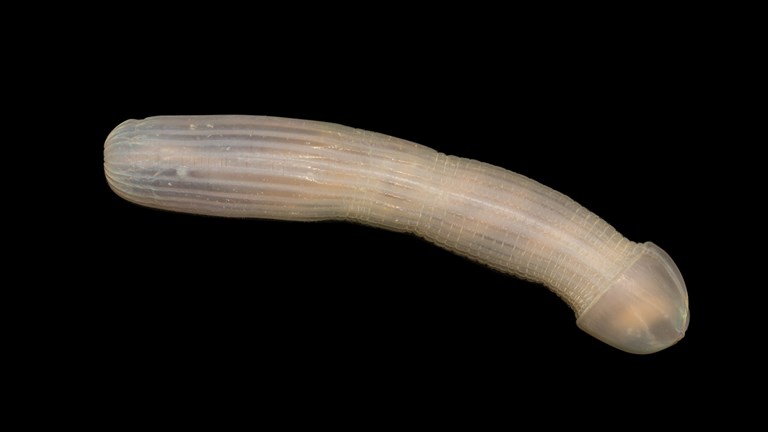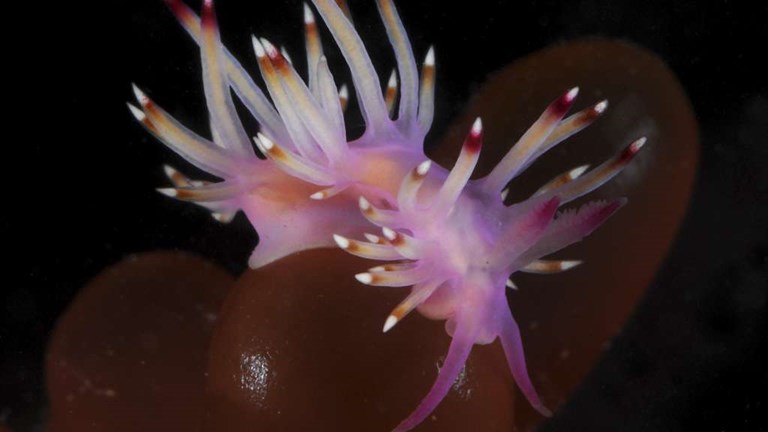Melbourne's annual congregation of Giant Spider Crabs
Every year, thousands of Giant Spider Crabs (Leptomithrax gaimardii) congregate in Port Phillip Bay ahead of their annual winter moult.
When solitary, these crabs are often hard to spot; algae, sponges and sea squirts set up shop on their shells and provide excellent camouflage. However when the crabs aggregate and march, this hungry army is easy to spot. They scavenge whatever food they can find, including the wildlife on the shells of one another.
The spectacle of hundreds of large orange crabs against the bare, sandy sea floor is an amazing sight:
What are they doing in Melbourne?
It’s still a bit of a mystery what the aggregations are all about but senior curator Dr Julian Finn has some ideas from several years of observation.
Like many crustaceans, Giant Spider Crabs are protected by their hard body shell, rather like a suit of armour. The trouble is that a hard shell doesn’t allow room for growth. Crabs must shed their old skin to get bigger; they can expand their size in the brief window before the new skin hardens. The process of moulting takes up to an hour and all the crabs in an aggregation moult almost simultaneously.
A soft, freshly-moulted crab is irresistible to predators such as rays, seals and birds. By aggregating in the thousands an individual crab reduces its chance of being eaten, much the same way as mammals in herds find protection in numbers.
Movement into shallow waters may help the crabs, usually dispersed throughout Port Phillip Bay, aggregate in a single mass and gain refuge from the strong tidal currents that scour the deep channels.
An earlier explanation that the annual aggregations were related to mating has thus far proved unlikely, as following the moulting of tens of thousands of crabs, only the odd couple has been observed to mate. We still don’t know however what happens when they disperse back into deep water. Julian believes this sudden influx of tender crab meat is an important part of the Port Phillip Bay food chain.
If you'd like to see some Giant Spider Crabs without the need for SCUBA gear, come and take a look at the entrance of the Marine Life exhibition at Melbourne Museum.
Got a question about Giant Spider Crabs? We can help you with identifications and general research. Ask us!

